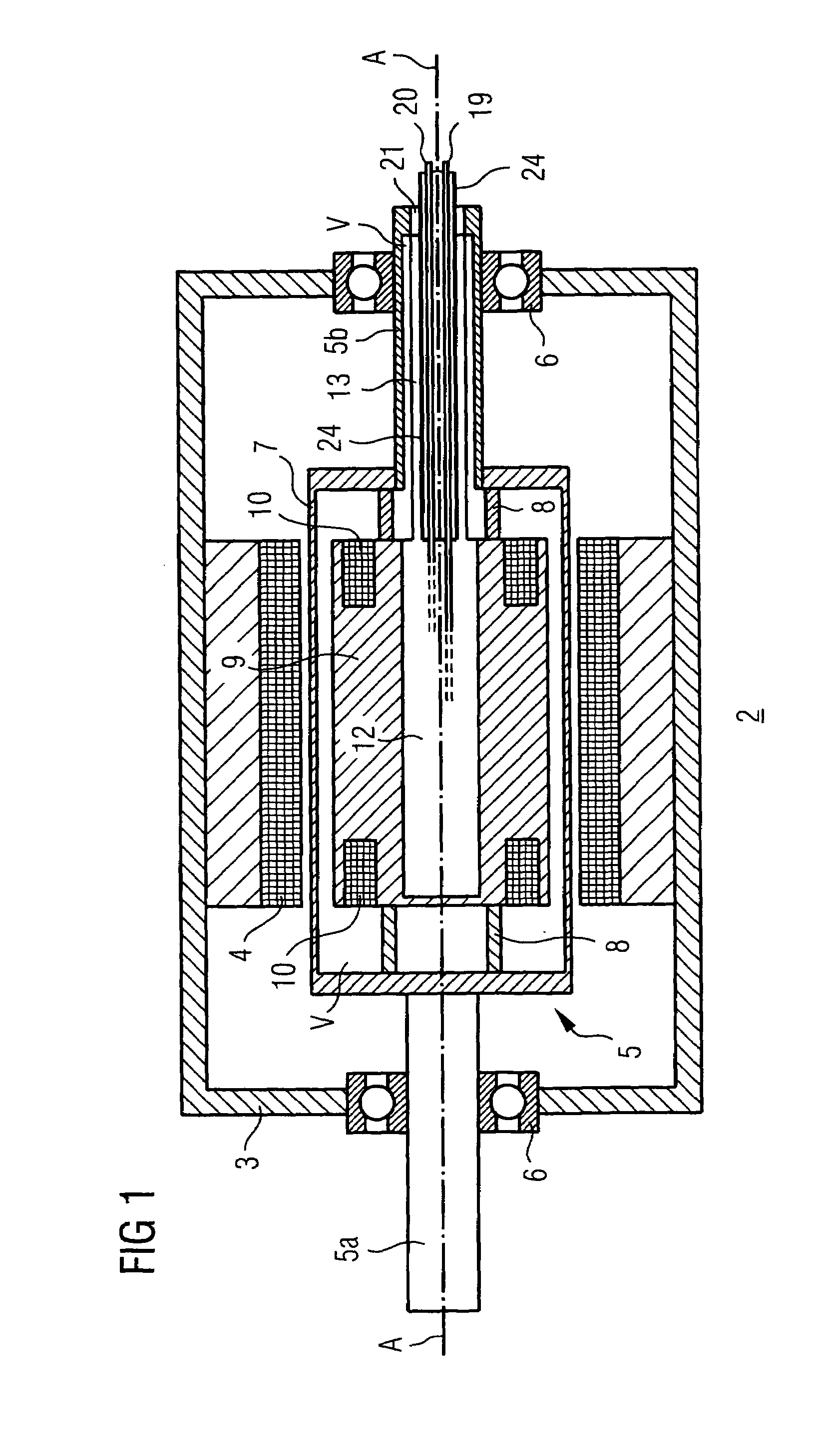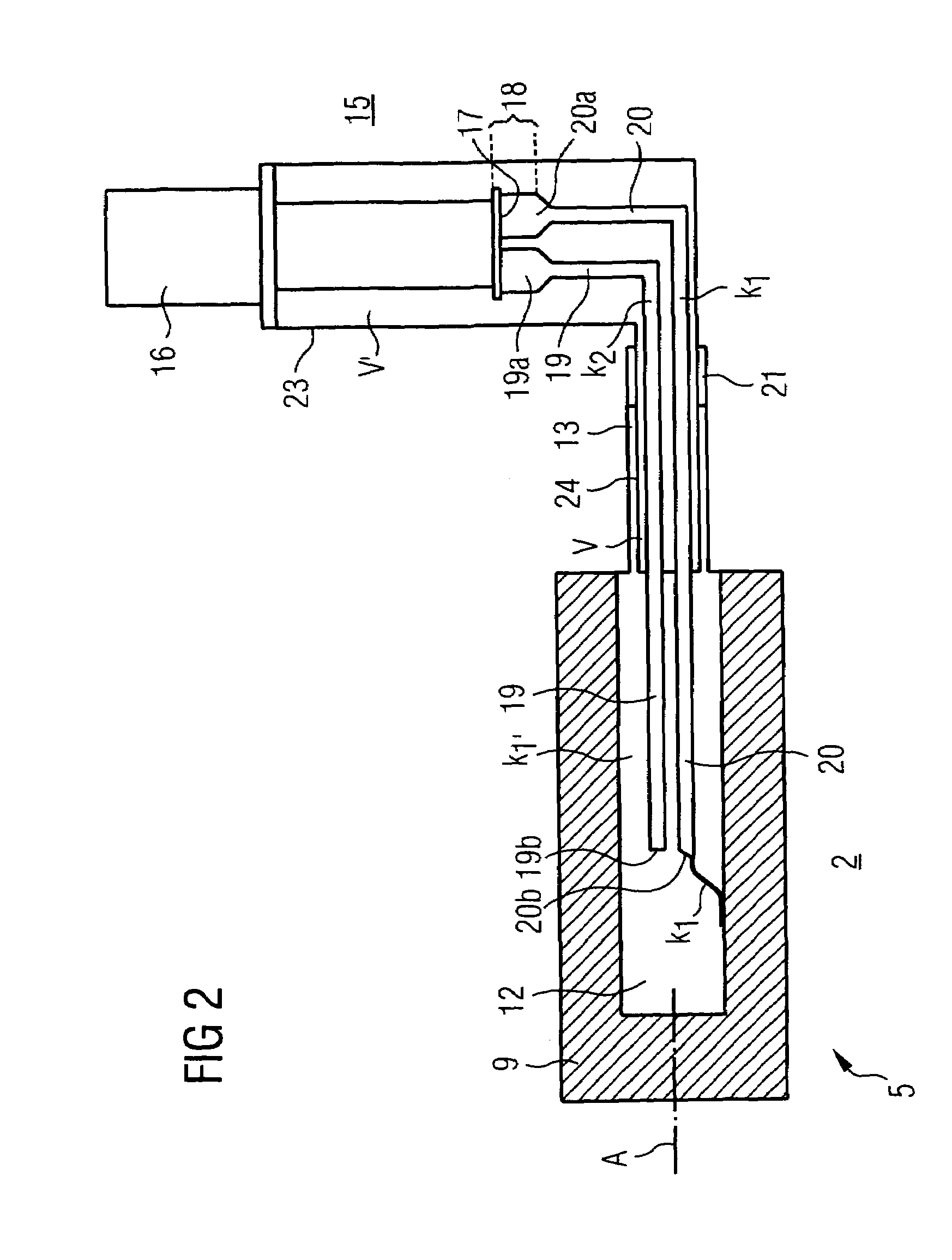Superconductive device comprising a refrigeration unit, equipped with a refrigeration head that is thermally coupled to a rotating superconductive winding
a superconductive winding and refrigeration unit technology, applied in the direction of indirect heat exchangers, lighting and heating apparatus, domestic cooling devices, etc., can solve the problems of affecting the operation of the conventional valve drive mechanism, and affecting the operation of the refrigeration unit. , to achieve the effect of reducing equipment costs and reliable and cost-effective operation
- Summary
- Abstract
- Description
- Claims
- Application Information
AI Technical Summary
Benefits of technology
Problems solved by technology
Method used
Image
Examples
Embodiment Construction
[0031]The embodiments of superconductive devices according to the invention highlighted on the basis of the diagrams in the following can constitute a (synchronous) motor or a (synchronous) generator in particular in each case. The superconductive device comprises a rotating superconductive winding, which in principle permits the use of metallic LTS material (low Tc superconductive material) or oxidic HTS material (high Tc superconductive material). MgB2 can also be considered as a superconductive material. For the following exemplary embodiments, let an HTS material such as the known (Bi,Pb)2Sr2Ca2Cu3Ox, for example, be selected. The winding can consist of a coil or a system of coils in a 2-pole, 4-pole or other multipole arrangement. The outline structure of the parts of such a superconductive device forming a synchronous machine, for example, that are situated in the area of the rotor, can be seen in FIG. 1, which is based on known embodiments of such machines (cf. the said U.S. ...
PUM
 Login to View More
Login to View More Abstract
Description
Claims
Application Information
 Login to View More
Login to View More - R&D
- Intellectual Property
- Life Sciences
- Materials
- Tech Scout
- Unparalleled Data Quality
- Higher Quality Content
- 60% Fewer Hallucinations
Browse by: Latest US Patents, China's latest patents, Technical Efficacy Thesaurus, Application Domain, Technology Topic, Popular Technical Reports.
© 2025 PatSnap. All rights reserved.Legal|Privacy policy|Modern Slavery Act Transparency Statement|Sitemap|About US| Contact US: help@patsnap.com



